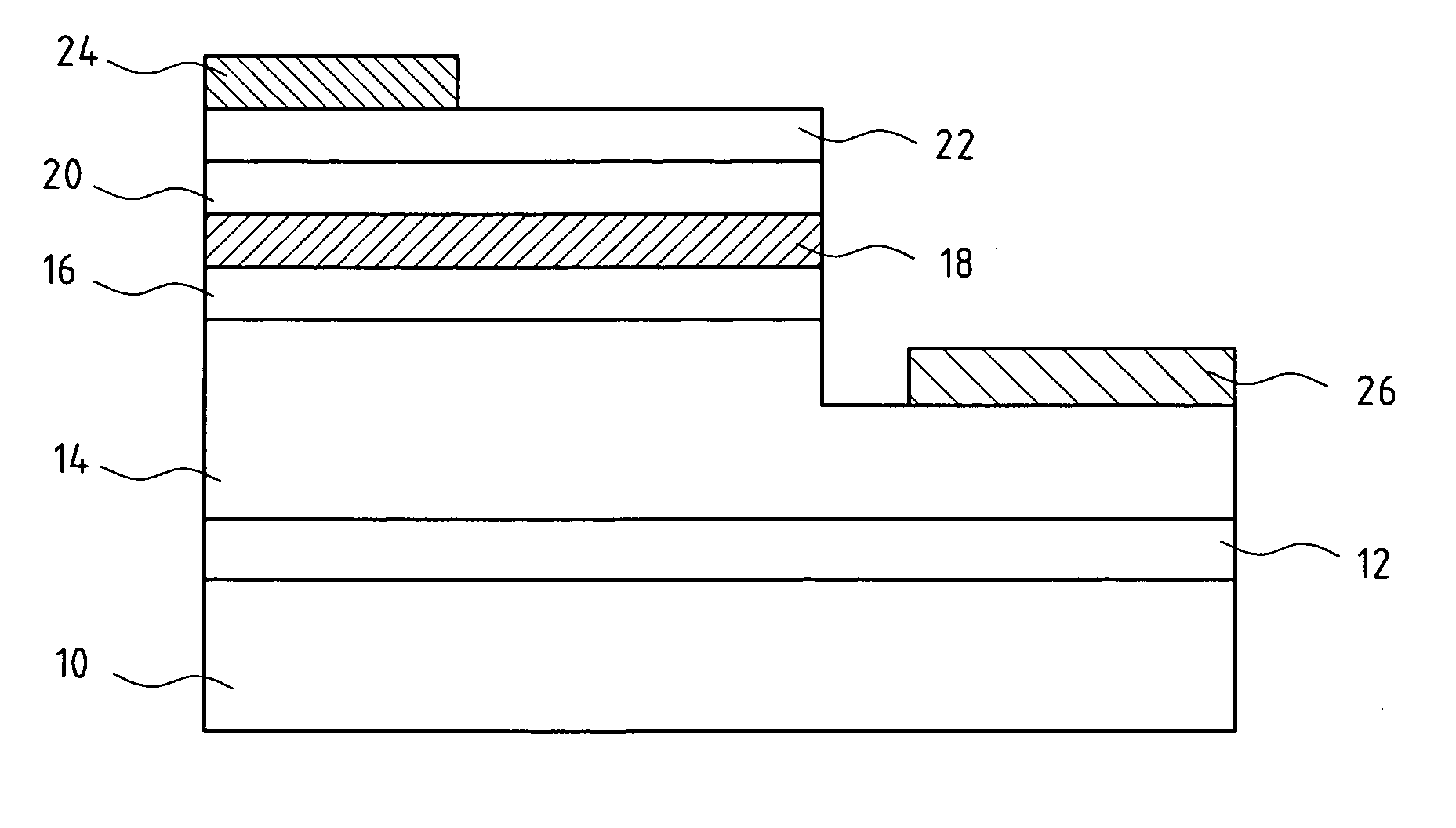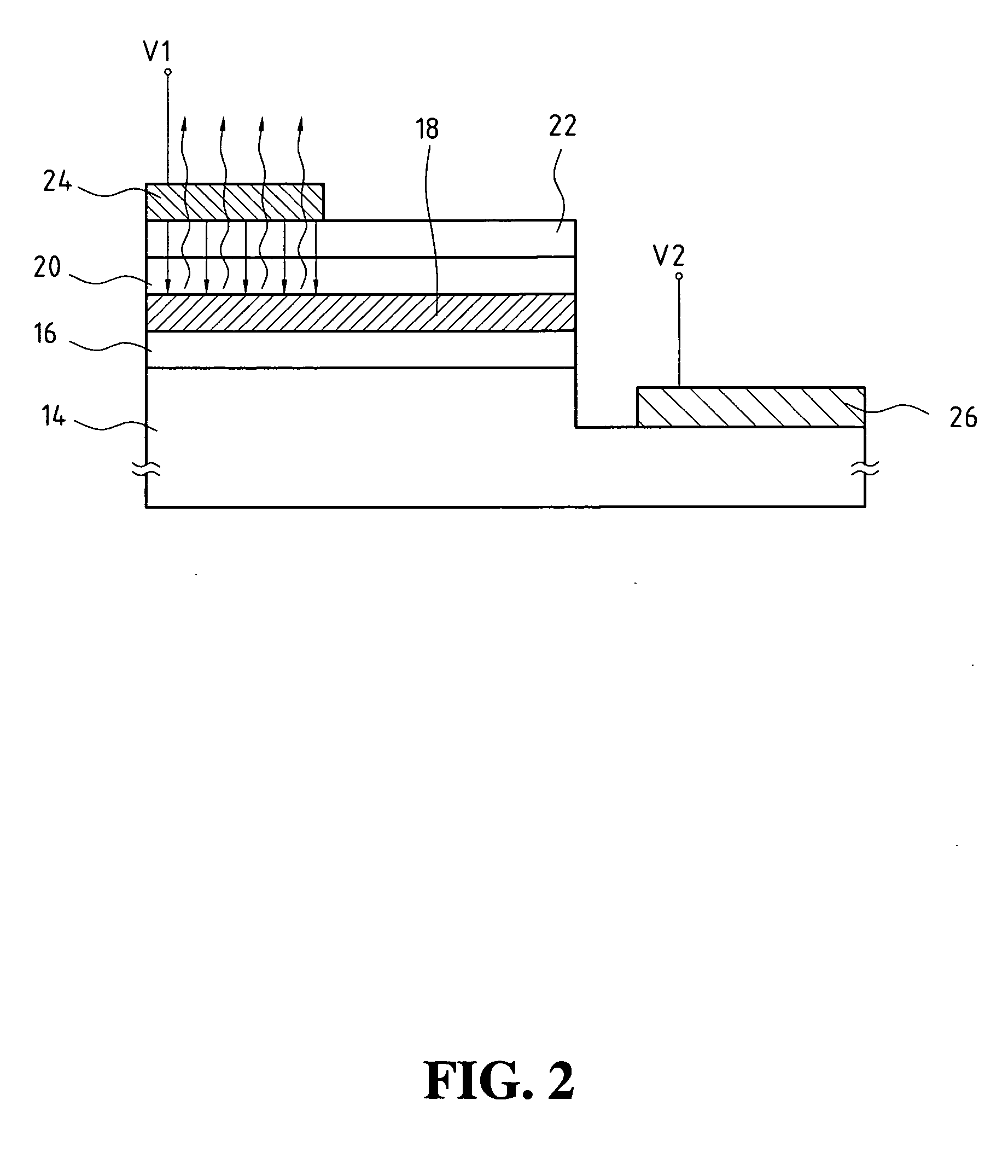Light emitting diode structure
a technology of light-emitting diodes and contact layers, which is applied in the direction of basic electric elements, electrical apparatus, semiconductor devices, etc., can solve the problems of reducing the yield rate of light-emitting diodes, increasing production costs, and p-type contact layers cannot be effectively formed in light-emitting diodes, so as to enhance the light-emitting efficiency of light-emitting diodes, improve the physical properties of contact layers, and enhance the light-e-
- Summary
- Abstract
- Description
- Claims
- Application Information
AI Technical Summary
Benefits of technology
Problems solved by technology
Method used
Image
Examples
Embodiment Construction
[0025] To make the objectives, characteristics, and features of the present invention more understandable to those skilled in the related arts, further explanation along with the accompanying drawings is given in the following.
[0026] In a light emitting diode structure according to the present invention, a high carrier density (i.e. high conductivity) contact layer is formed using a Constructive Oxide Contact Structure contact layer to reduce the contact layer's resistance. When working with an appropriate transparent electrode, the contact layer can effectively increase a light emitting efficiency and reduce an operating voltage.
[0027] As the Constructive Oxide Contact Structure contact layer has a higher carrier density than that of a bulk layer, an Ohmic contact can be easily formed between the contact layer and the transparent electrode above. On the other hand, for a contact layer according to a prior art with a less carrier density, a Schottky contact could be formed and an ...
PUM
 Login to View More
Login to View More Abstract
Description
Claims
Application Information
 Login to View More
Login to View More - R&D
- Intellectual Property
- Life Sciences
- Materials
- Tech Scout
- Unparalleled Data Quality
- Higher Quality Content
- 60% Fewer Hallucinations
Browse by: Latest US Patents, China's latest patents, Technical Efficacy Thesaurus, Application Domain, Technology Topic, Popular Technical Reports.
© 2025 PatSnap. All rights reserved.Legal|Privacy policy|Modern Slavery Act Transparency Statement|Sitemap|About US| Contact US: help@patsnap.com



